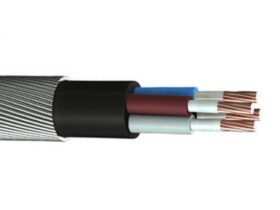Stranded wires are a type of electrical conductor that consists of multiple small wires or strands of wire twisted together to form a larger, more flexible wire. There are several types of stranded wire, each with its own unique properties and uses. Here are some of the most common stranded wire types:
- Solid Strand Wire: This is the simplest form of stranded wire and consists of a single, solid conductor. It is used in applications where flexibility is not required.
- Concentric Strand Wire: This type of stranded wire consists of multiple layers of wire strands, with each layer having a slightly different diameter. This construction creates a more uniform and concentric shape, which makes the wire more flexible and resistant to fatigue.
- Bunch Strand Wire: This type of stranded wire consists of a group of individual wires twisted together without any particular order. It is commonly used in applications where flexibility is important but high strength is not required.
- Rope Strand Wire: This type of stranded wire consists of several groups of wires twisted together in a helical pattern. It is used in applications where high strength and flexibility are both important.
- Litz Wire: This type of stranded wire consists of individually insulated strands twisted together in a specific pattern to reduce electrical losses due to skin effect and proximity effect. It is commonly used in high-frequency applications such as transformers, inductors, and motors.
Overall, the choice of stranded wire type depends on the specific requirements of the application, including the level of flexibility, strength, and electrical performance needed.












Leave a Reply